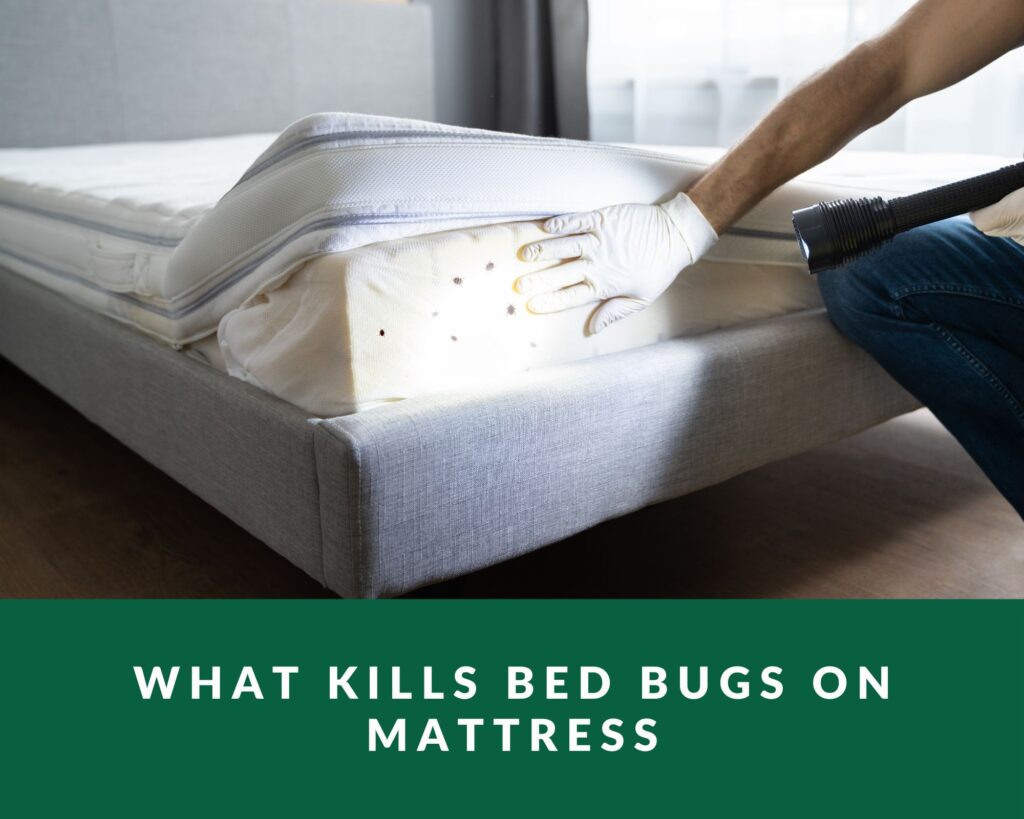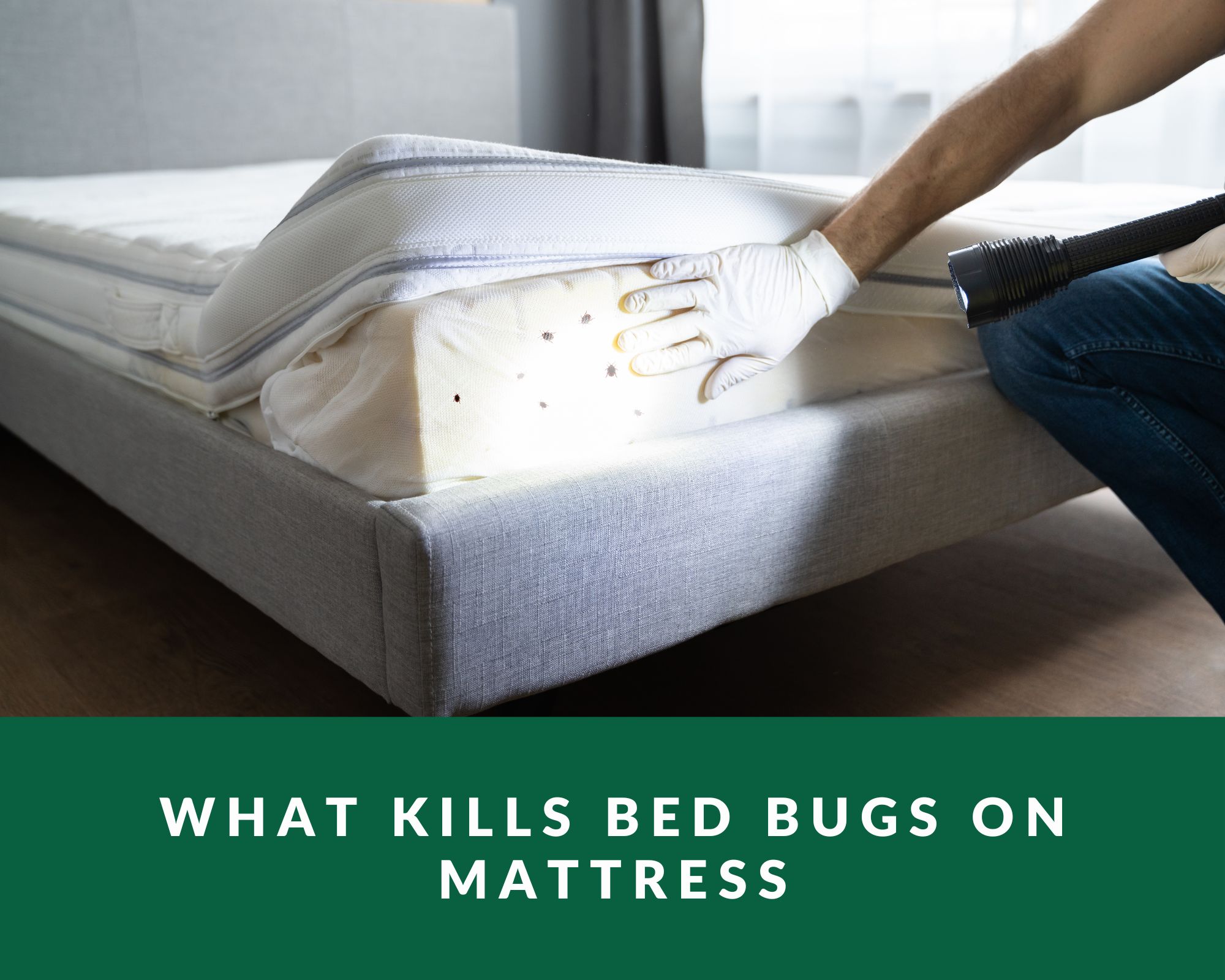
Bed bugs are small, wingless insects known to ingest human and animal blood while their hosts sleep. On infected things, they are conveniently transported from one area to another. Bedbugs are unable to fly or jump, and they struggle to scale polished or metal surfaces.
The adult bed bug’s length can reach 10 mm. They are flat, round, and have a short, broad head. Adult bed bugs are brown, but after feeding, they turn a blood red color. Although they are smaller (1.5 mm long) and have a lighter hue, young bedbugs have the same shape as adults. They become darker after eating as well.
Where Do Bed Bugs Hide
Although bed bugs are most frequently seen on and around beds, they won’t hesitate to infest other parts of your house. They can conceal themselves within your baggage, under furniture, behind the fold of drapes, and behind electrical covers. The truth is that your home likely contains bed bugs somewhere. Although they might choose staying close to your bed, as they procreate and their population increases, they will spread to other regions.
How Do Bed Bugs Get On Mattress
Any place where people spend a lot of time may attract bed bugs. They will seek out dark hiding places that are close to and practical to their food source after they arrive in the area. Since bed bugs may easily emerge at night while we are sleeping to feed, beds are the ideal place for them to hide. Additionally, if disturbed, they can easily retire to the protection of the bed frame or mattress. Even though bed bug infections are frequently linked to beds, they can also be found on other furniture in the house and are easily transferred from one place to another.
How Do I know If My Mattress Has Bed Bugs
It can be difficult to tell whether bed bugs are present in your mattress. They are very well suited to hiding out throughout the day in tiny cracks and crevices and only coming out at night when you are asleep. The bites you detect on your body first thing in the morning are frequently the first indication that bed bugs are in your mattress. Nevertheless, not everyone reacts to the bites, so even this may not be a sign. To determine if your mattress contains bed bugs, continue reading.
Blood spots on your bedding
Even if bed bugs are feeding on us without our knowledge, they don’t always get away unhurt. In your sleep, if you abruptly move or reposition your body, you run the risk of accidentally crushing or squeezing a bed bug that has just finished eating. They normally don’t die from it, but it can let some of the blood they just ate leak out, leaving a prominent scarlet or rust stain.
Odour ( A sweet, sickly scent, not unlike cinnamon but far less pleasant)
Our ability to smell might occasionally be the first indication that something is wrong. An early indication of bed bugs may be a strange, skunky smell in your bedroom that doesn’t seem to come from a visible source, such as a heap of dirty laundry.
Fecal marks
Fecal stains are the result of bed bug excretions, which contain digested human blood. Because it includes iron, the digested blood has a dark brown or black appearance and emits a slight rusty odor that adds to the overall disagreeable smell of a bed bug infestation.
Shell casings
There is a very high likelihood that you have bed bugs if you encounter bed bug shell casings, also known as husks or shed skins. A burgeoning bed bug infestation can be detected early on by abandoned shell casings.
How can I prevent bed bugs on mattress
If you’ve already gone through the pain of having bed bugs, you probably don’t want them returning. Even though removing bed bugs from a mattress is challenging, it can also be challenging to prevent them from returning. Follow these instructions to keep them out:
- Dust and clean any potential hiding locations frequently.
- Keep a watchful eye on the affected areas.
- Put a mattress protector to use.
- Launderable garments and linens that have been infected with bugs
- Don’t carry used mattresses or furniture home.
- Keep your bed linens off the floor and regularly vacuum.
- Declutter the floor, and regularly change your bedding.
What kills bed bugs on a mattress
1. Dry scrub and vacuum the mattress
To remove bed bugs and their eggs from the mattress seams, use a firm brush. In some places, particularly those with groups or clusters of bed bugs, vacuums can be useful in lowering the quantity of bed bugs. Although it’s not always effective, vacuuming can help you find bed bugs. Vacuum the area around the bed after immediately using a vacuum cleaner to eliminate any stray insects or their eggs from the sleeping surface. Before sealing and discarding in outdoor trash cans, empty the contents of a vacuum cleaner or vacuum-sealed bag into plastic bags.
Note: Vacuuming and dry scrubbing only eliminate visible bed bugs and their eggs from the surface of the mattress; they leave bed bugs that are burrowed deeper inside the bed unaffected.
2. Steaming
An efficient chemical-free method of getting rid of bed bugs is steaming your mattress. In just a few minutes, bed bugs and their eggs can be killed when properly steam cleaned mattresses. For survival, bed bugs require blood, carbon dioxide, and heat. As a result, they thrive and breed more in temperatures between 80 and 90 degrees Fahrenheit.
But as the temperature rises, their ability to survive sharply declines. They will perish if you subject them to temperatures between 120°F and 150°F. The exposure, however, must be continuous for roughly 20 to 25 minutes. Additionally, steam cleaners may generate steam at temperatures of up to 300°F. This temperature will almost immediately destroy bed bug eggs, nymphs, and adults.
Pros
- To keep the mattress clean, steam cleaning can be a particularly effective technique.
- Additionally, steam cleaning is a remarkably eco-friendly cleaning technique.
Cons
- The cost of buying a steamer for one person is high.
- The difficult aspect of this situation is how thick the mattress is and how well the steamer can clean everything. If the steamer doesn’t get to the insect’s hiding places, bed bugs can simply start new generations.
3. Use Insecticides That are Safe for Your Mattress
Chemical treatment is another name for this process. It entails the use of pesticide that is safe for mattresses and a mattress example. Make sure the space is well-ventilated before using an aerosol spray, and make sure you have read and comprehend the instructions on the container. Additionally, make sure you have mattress-specific insecticide rather than an aerosol for general use. The mattress’s infestation site can then be treated with an insecticide spray.
There is no guarantee the solution will continue to destroy any leftover bugs that come into contact with it after it has dried. Similar to this, some insecticides contain components that permit bed bug eggs to hatch yet quickly kill the pests. Other components nearly never work to stop the egg from hatching or to kill the bug after it has.
Considering that the insecticide does include dangerous chemicals, you’ll also want to be cautious about using it excessively around your sleeping space. Numerous insecticides advise leaving the room, locking the doors, and keeping the windows open for about 15 minutes before returning.
Note: On a mattress, bed bugs can be eliminated. The best option could be to get a new mattress if the mattress has any tears or holes because it may not be possible to fix it.
Conclusion
It will take some time and persistence to completely eradicate bed bugs on the mattress. With the help of the aforementioned advice, the task can be completed without hiring a professional exterminator. For a complete cleaning, make sure to wash all of your clothing, linens, plush toys, pillows, and cushions. In the event of a bed bug infestation, removing the mattress is the recommended action to take. Removing the bed will save you a lot of effort and inconvenience while significantly reducing the infestation. We recognize that you could believe it is not in your best interests to get a new mattress, but if taking the preceding actions doesn’t work, you might have no other option.

